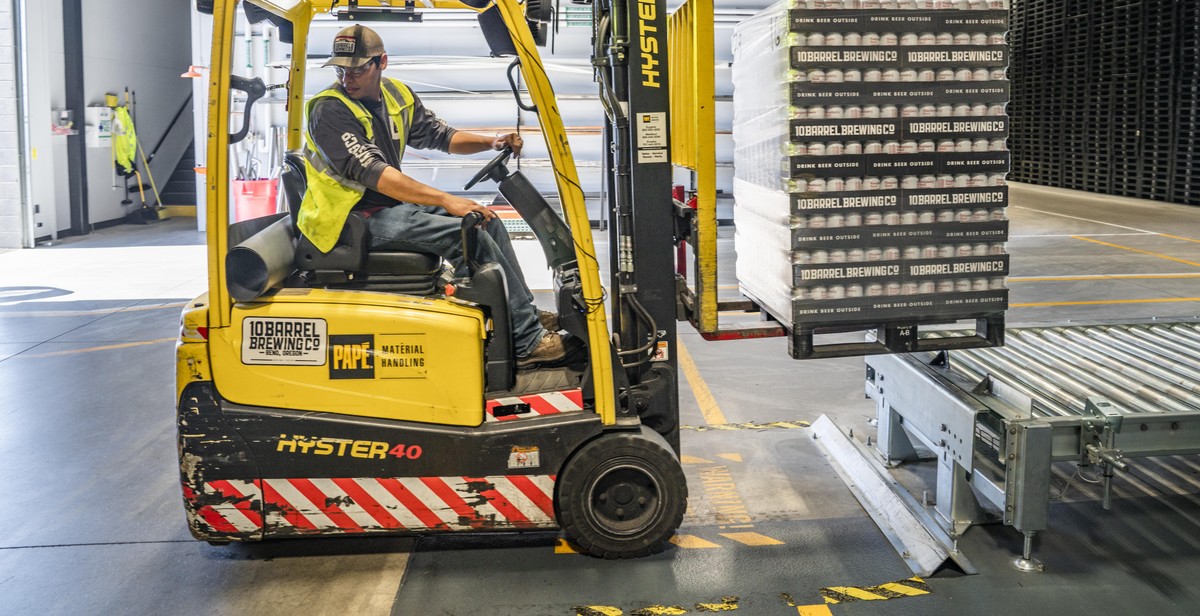How to Develop a Vaccine Distribution Plan: Logistics and Implementation Strategies
The COVID-19 pandemic has brought to light the importance of efficient and effective vaccine distribution. As vaccines become available, it is crucial to have a well-planned distribution strategy to ensure that they reach the people who need them most. Developing a vaccine distribution plan involves careful consideration of logistics and implementation strategies.
Logistics
The logistics of vaccine distribution involve the physical movement of vaccines from the manufacturer to the end-user. This includes transportation, storage, and handling of the vaccines to maintain their efficacy. Factors such as temperature control, proper packaging, and tracking systems are critical components of vaccine logistics.
Implementation Strategies
The implementation of a vaccine distribution plan involves the coordination of various stakeholders, including healthcare providers, government agencies, and community organizations. Effective communication, outreach, and education are essential to ensure that the public understands the importance of vaccination and has access to it.
Developing a vaccine distribution plan requires collaboration and coordination across multiple sectors. By prioritizing logistics and implementation strategies, we can ensure that vaccines are distributed efficiently and equitably, ultimately saving lives and ending the pandemic.
Understanding the Importance of a Vaccine Distribution Plan
The COVID-19 pandemic has created an urgent need for a vaccine distribution plan. A vaccine distribution plan is a comprehensive strategy developed to ensure that vaccines are efficiently and effectively distributed to the population. The vaccine distribution plan is crucial in the fight against COVID-19 as it ensures that vaccines are available to all individuals who need them.
The Need for a Vaccine Distribution Plan
A vaccine distribution plan is essential for several reasons. Firstly, it ensures that vaccines are distributed equitably to all individuals who need them. This is important as it ensures that vulnerable populations, such as the elderly and those with underlying health conditions, are prioritized in the distribution of vaccines.
Secondly, a vaccine distribution plan helps to prevent the spread of the virus. By ensuring that vaccines are available to all individuals, the vaccine distribution plan helps to reduce the number of people who are infected with the virus. This, in turn, helps to reduce the burden on the healthcare system.
Finally, a vaccine distribution plan is essential for economic recovery. The COVID-19 pandemic has had a significant impact on the economy, and a vaccine distribution plan is crucial in ensuring that businesses can reopen and people can return to work.
Challenges in Developing a Vaccine Distribution Plan
Developing a vaccine distribution plan is not without its challenges. One of the biggest challenges is the limited supply of vaccines. The production and distribution of vaccines take time, and there is a limited supply of vaccines available. This means that governments need to prioritize certain populations based on their risk of contracting the virus.
Another challenge is the logistics of distributing vaccines. Vaccines need to be stored at specific temperatures, and transportation needs to be carefully coordinated to ensure that vaccines are not damaged during transit.
Finally, there is the challenge of vaccine hesitancy. Some individuals may be hesitant to receive the vaccine, which can impact the effectiveness of the vaccine distribution plan. Governments need to develop effective communication strategies to address vaccine hesitancy and ensure that individuals understand the importance of receiving the vaccine.
| Key Takeaways |
|---|
| A vaccine distribution plan is a comprehensive strategy developed to ensure that vaccines are efficiently and effectively distributed to the population. |
| A vaccine distribution plan is essential for ensuring that vaccines are distributed equitably to all individuals who need them, preventing the spread of the virus, and for economic recovery. |
| The challenges in developing a vaccine distribution plan include the limited supply of vaccines, logistics of distributing vaccines, and vaccine hesitancy. |

Key Components of a Vaccine Distribution Plan
Developing a vaccine distribution plan is a complex task that requires careful planning, coordination, and execution. A well-designed plan should prioritize the most vulnerable populations, allocate and distribute vaccines efficiently, ensure vaccine safety and efficacy, and continuously monitor and evaluate the distribution process.
Identifying Priority Groups
Identifying priority groups is a critical step in vaccine distribution planning. Priority groups may include healthcare workers, essential workers, elderly individuals, and those with underlying medical conditions. The Centers for Disease Control and Prevention (CDC) provides recommendations for priority groups based on the risk of severe illness or death from COVID-19.
- Identify priority groups based on risk
- Follow CDC recommendations for priority groups
- Collaborate with local health departments and healthcare providers
Allocating and Distributing Vaccines
Allocating and distributing vaccines efficiently is crucial to ensure that priority groups receive the vaccine as soon as possible. The vaccine distribution plan should consider the number of vaccines available, transportation logistics, storage requirements, and the number of doses needed per person.
- Allocate vaccines based on priority groups
- Ensure transport and storage logistics are in place
- Create a plan for administering vaccines to priority groups
Ensuring Vaccine Safety and Efficacy
Ensuring vaccine safety and efficacy is a top priority in vaccine distribution planning. The vaccine distribution plan should include measures to monitor adverse reactions, ensure proper storage and handling of vaccines, and maintain the cold chain during transportation.
- Monitor adverse reactions and report to the Vaccine Adverse Event Reporting System (VAERS)
- Ensure proper storage and handling of vaccines
- Maintain the cold chain during transportation
Monitoring and Evaluation
Monitoring and evaluation are critical components of vaccine distribution planning to ensure that the plan is effective and efficient. The vaccine distribution plan should include measures to monitor vaccine uptake, identify challenges in the distribution process, and make necessary adjustments to the plan.
- Monitor vaccine uptake and coverage
- Identify challenges in the distribution process
- Make necessary adjustments to the plan
| Component | Description |
|---|---|
| Identifying Priority Groups | Identify priority groups based on risk and follow CDC recommendations |
| Allocating and Distributing Vaccines | Allocate vaccines based on priority groups, ensure transport and storage logistics are in place, and create a plan for administering vaccines to priority groups |
| Ensuring Vaccine Safety and Efficacy | Monitor adverse reactions, ensure proper storage and handling of vaccines, and maintain the cold chain during transportation |
| Monitoring and Evaluation | Monitor vaccine uptake and coverage, identify challenges in the distribution process, and make necessary adjustments to the plan |

Logistics and Implementation Strategies
Developing a vaccine distribution plan requires a comprehensive logistics and implementation strategy. The success of the plan depends on establishing partnerships, developing a communication plan, ensuring adequate storage and transportation, and training and capacity building.
Establishing Partnerships
One of the critical steps in developing a vaccine distribution plan is establishing partnerships with various stakeholders. This includes the government, healthcare providers, and community organizations. Collaboration among these organizations is essential to ensure the smooth delivery of vaccines to the target population.
Partnerships with logistics providers are also crucial to ensure that vaccines are transported safely and efficiently. These providers should have the necessary infrastructure and expertise to ensure that the vaccines are stored and transported at the right temperature and conditions.
Developing a Communication Plan
A communication plan is essential to ensure that the target population is informed about the vaccine distribution plan. The plan should include clear and concise messaging about the vaccine’s safety and efficacy, the target population, and the vaccination process.
The communication plan should also include strategies to address vaccine hesitancy. This can include providing accurate information about the vaccine and addressing common misconceptions. Engaging with community leaders and influencers can also help to build trust and increase vaccine uptake.
Ensuring Adequate Storage and Transportation
Adequate storage and transportation are critical to ensure that vaccines are delivered safely and efficiently. The storage facilities should meet the required temperature and storage conditions to maintain the vaccine’s efficacy.
The transportation of vaccines should also be carefully planned to ensure that they are not exposed to extreme temperatures or damaged during transit. This requires the use of specialized vehicles and equipment that can maintain the required temperature and conditions.
Training and Capacity Building
Training and capacity building are essential to ensure that healthcare providers have the necessary skills and knowledge to administer the vaccine safely and efficiently. This includes training on vaccine storage and handling, vaccine administration, and adverse event management.
Capacity building should also focus on increasing the number of healthcare providers who can administer the vaccine. This can be achieved by training additional staff or leveraging the skills of existing staff in other areas.
| Key Points |
|---|
| Establish partnerships with various stakeholders, including logistics providers |
| Develop a communication plan to inform the target population about the vaccine distribution plan |
| Ensure adequate storage and transportation to maintain the vaccine’s efficacy |
| Provide training and capacity building to healthcare providers to administer the vaccine safely and efficiently |
Developing a vaccine distribution plan requires careful planning and coordination among various stakeholders. By establishing partnerships, developing a communication plan, ensuring adequate storage and transportation, and providing training and capacity building, the plan can be implemented successfully.
Conclusion
Developing a vaccine distribution plan is a critical step to ensure that the vaccine reaches all the people in need. The logistics and implementation strategies for the vaccine distribution plan are complex and require careful planning and execution.
Firstly, it is essential to identify the priority groups for vaccination and ensure that the vaccine is distributed equitably among them. Secondly, the vaccine distribution plan must consider the transportation and storage requirements for the vaccine, including temperature control and security measures. Thirdly, the vaccine distribution plan must involve effective communication and collaboration among all stakeholders, including healthcare providers, policymakers, and the public.
As a professional article writer and content creator with years of experience, I understand the importance of developing a well-planned and executed vaccine distribution plan. I have seen firsthand how a successful vaccine distribution plan can save lives and prevent the spread of infectious diseases.
Overall, successful vaccine distribution requires a comprehensive and coordinated effort from all stakeholders involved. By following the logistics and implementation strategies outlined in this article, we can ensure that the COVID-19 vaccine is distributed efficiently and equitably, ultimately leading to a healthier and safer community.
